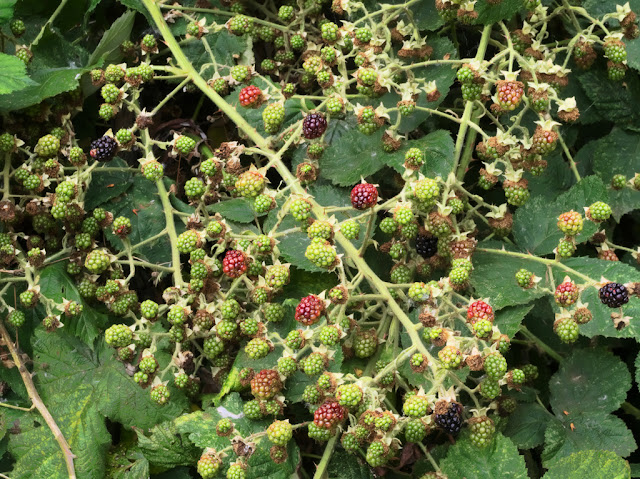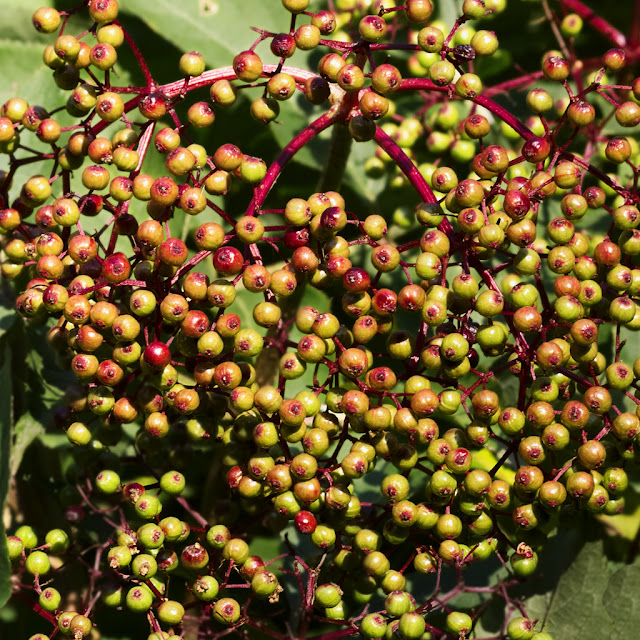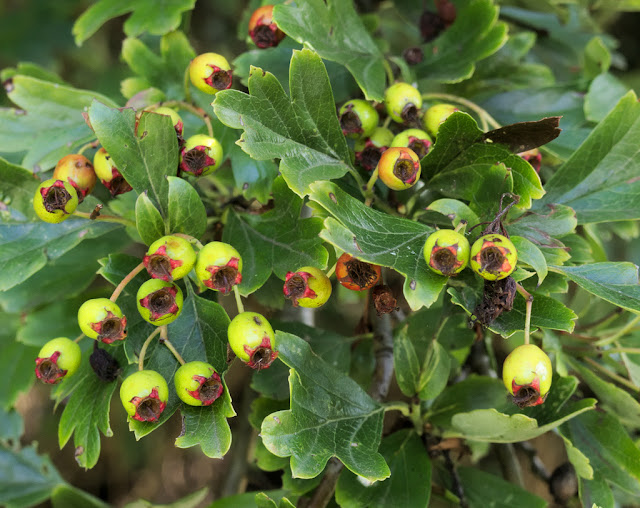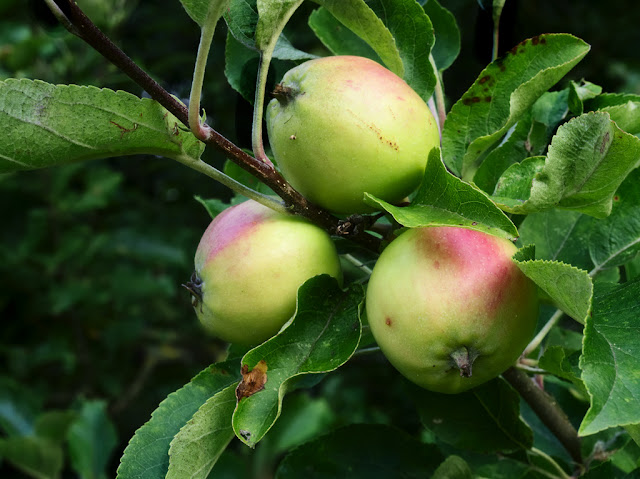Summer in Milton
Country Park is a time of little outward change. The trees and
bushes which dominate the landscape of the park seem to be unaltered
for months, with only the green of the leaves becoming tired and
losing its spring freshness. However, on closer inspection, the
fruit which will make such a spectacular contribution to the autumn
display is steadily growing.
 |
| Path by Wetlands - 2 August 2015 |
A Sprint From Flower to Fruit
Prior to looking through my photographs for this post, I had not realised how much the time it takes fruit to develop from the flower varies. Some of the latest flowering bushes are among the first to fruit.
It seems the blackberry had barely lost its petals, before fully formed fruit was visible, some of which was already turning red. Apparently the time for a blackberry from petal to fruit averages just 45 days. The image above backs this up, as I photographed this bush, in bloom, on the 29th June.
 |
| South of Park - 4 August 2015 |
Another late flowering bush with early ripening fruit is the elder. Not quite as fast as the blackberry, but the bush pictured above was in flower in mid June.
In the Slow Lane
In contrast, the fruit of some of the earliest flowering trees and bushes is amongst the last the ripen.
 |
| By Fen Road Exit - 26 July 2015 |
The cherry plum is the earliest of all the fruit blossom. Here, three months after flowering in March, the fruit is all green.
 |
| Southern End of Park - 31 July 2015 |
Similarly, the hawthorn berries show no sign of ripening. I don't know if it is just the size of fruit, but the hawthorn berries appear to be a lot sparser than the cherry plums. Yet both bushes had masses of confluent blossom.
 |
| By Fen Road Exit - 26 July 2015 |
These apples at least show some signs of ripening.
It is interesting to speculate as to what evolutionary selection pressures have led to the late flower - early fruit, and the early flower - late fruit strategies.
Hazelnuts
 |
| By Fen Road Exit - 23 July 2015 |
In literature, hazelnuts are an essential part of the English
countryside. Yet, until I started this project, my only contact with
these nuts was with the pre-packed variety to be found on supermarket
shelves. This may have something to do with my upbringing in the
treeless fens of northern Cambridgeshire. My wife called these
cobnuts, which is apparently the name for a variety of cultivated
hazelnuts.
NEXT: Bridges






No comments:
Post a Comment